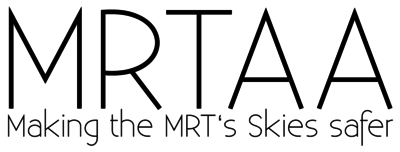MRT Aviation Agency
The MRT Aviation Agency is responsible for the organization of aviation around the MRT. Its primary goal is to provide Air Traffic Control (ATC) services to airlines and General Aviation flights. MRTAA provides en-route air traffic control via its four Area Control Centers (ACCs) distributed across the map, as well as terminal control on th MRT'S major aerodromes.
Airspace classes
The MRT airspace is organized into different classes of airspace, modeled after the US airspace organization.
Class A airspace
Class A (Alpha) airspace is controlled airspace that begins at 18,000 ft above sea level. The following conditions must be met for aircraft to enter the airspace:
- Aircraft must be equipped with two-way radio
- Aircraft must receive clearance from ATC to enter the airspace. Assignent of an altitude higher than 18,000 ft implies the clearance to enter.
- The flight must happen under Instrument Flight Rules (IFR), which also implies that a flight plan must have been filed with MRTAA.
- Aircraft must be capable of cruise speeds faster than 250 knots TAS.
Class B airspace
Class B (Bravo) airspace surrounds the MRT's most busiest airports. ATC provides seperation for all aircraft, regardless of whether they are under VFR or IFR. The airspace is shaped like an upside down wedding cake, with a radius of 500 blocks from ground level to 1000 ft AGL, and then a radius of 1000 blocks upto 10,000 ft MSL. The following requirements must be met for aircraft entering the airspace:
- Aircraft must be equipped with two-way radio
- Aircraft must receive clearance from ATC to enter the airspace.
- Pilots must obey all instruction from ATC within the airspace
- Aircraft must be equipped with a Mode-C transponder, as it will be assignes a unique squawk code before entering the airspace.
The following airports are surrounded by Class B airspace:
- MRT International Airport
- Bloomington-Robin's Hill International Airport
- Ilirea-Vermillion International Airport
- Epsilon International Airport
- Whitechapel Sky Harbor
Class C airspace
Class C (Charlie) airspace exists around all other airports that have a control tower. They are cylindrical in shape, and thex extend from the surface to 10,000 ft MSL with a radius of 750 blocks. Please see the published charts to see where this kind of airspace exists. Aircraft entering must fulfill the following requirements:
- Aircraft must be equipped with two-way radio
- Aircraft must receive clearance from ATC to enter the airspace.
- A mode C transponder is NOT required.
Class D airspace
Class D (Delta) airspace does not exist on the MRT.
Class E airspace
Class E (Echo) airspace exists in all spaces not covered by classes A, B, and C. It is controlled airspace, meaning that ATC provides radar services to aircraft flying under IFR. However, VFR aircraft are not required to establish communications with Air Traffic contol, but are welcome to do so to receive Traffic Advisories. It extends from ground level to 17,999 ft, in places where class A, B, and C airspace does not exist.
Flight Information Regions and Air Traffic Control Facilities
The MRT is divided into five Flight Information Regions (FIRs). Four of these regions will be located in the new world, while the old world is covered by a single FIR.
Old World FIR
The Old world FITR provides en-route ar traffic control in the entirety of the old world. Its en-route control centre is not been bult yet, but will be located somewhere in the old world, preferably near an airport. Contact MonsieurKeks if you have a space :)
New Phoenix FIR
The New Phoenix FIR covers the entire north-east quadrant of the new map. The Area Control Center of the New Phoenix FIR is located at New Phoenix. The ACC's callsign is Phoenix Center.
Northwest FIR
A location for the ACC has not yet been determined.
Southwest FIR
A location for the ACC has not yet been determined.
Southeast FIR
A location for the ACC has not yet been determined.
Flight plans
Before an IFR flight can take place, a flight plan has to be filed here.
